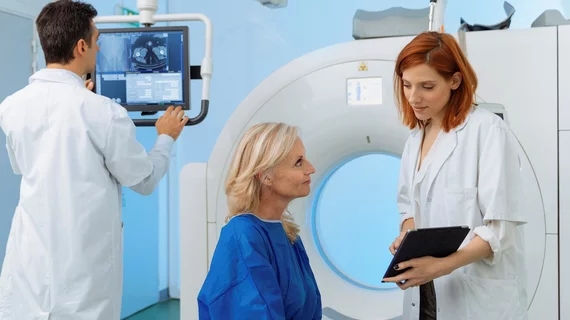‘Careful what we wish for’: Radiologist warns against relinquishing contrast monitoring duties
Those advocating for radiologists to take a back seat in overseeing contrast administrations must consider the unintended consequences of their viewpoints and reconsider their call, one expert wrote recently in JACR.
Just last week, a pair of imaging experts argued that rads are no better than technologists at managing contrast reactions and face a similar risk of injury on their drive to imaging centers as patients receiving injections themselves. The duo labeled the current policy “overkill” and instead suggested training and reimbursing radiologic technologists for the job.
Jeffrey C. Weinreb, MD, with Yale-New Haven Hospital, however, says not so fast. While the diagnostic radiologist acknowledges the topic requires discussion, he said the authors’ March 16 comparison “may be misguided.”
In his own opinion piece published Friday in JACR, Weinreb argued the potential benefits and hazards for patients must come first. Additionally, voluntarily relinquishing contrast duties may send “mixed messages” to specialists and trainees about the profession’s goals of increased visibility and direct involvement with patients.
“We need to avoid providing fodder for the notion that radiologists do not want to deal with patients and are ‘not real doctors,’” he explained March 19. “As radiology’s supervision and interpretation code is part of physician work and falls under the professional component, there is also the potential for diminished reimbursement. In the long-term, there could be more harm than good.”
Weinreb offered up a number of specific examples and statistics to back up his assertions.
For one, radiologists are rarely caught up in legal situations regarding adverse reactions, he wrote. Only one case between 2016 and 2018 related to a contrast-driven medical reaction involved a radiologist, according to data provided by the Medical Professional Liability Association.
Again challenging recent assertions, the Yale doctor argued there’s more to managing reactions than the editorialists suggested. Recognizing the event is one thing, but rads and other docs are more experienced in utilizing patient history and other clinical indicators to direct appropriate care and manage follow-up.
And even given imaging providers’ limited experience with adverse events, a quick pocket e-guide—such as those available from the American College of Radiology—can jog their memory, Weinreb added.
Educating and reimbursing technologists for this added duty may be too difficult to scale out. And in this current era of teleradiology, he explained, educating more physicians to cover contrast reactions may be a better alternative.
As it stands, the coronavirus disease 2019 public health emergency declaration has prompted the federal Centers for Medicare & Medicaid Services to allow nonphysician “supervising practitioners,” such as nurse and physician assistants, to monitor contrast injections, subject to state laws. And while the ACR is likely to reinstate legacy requirements after the declaration is over, now is a good time to open a dialogue, according to Weinreb.
“As we consider new paradigms for coverage of contrast reactions, let’s focus on the potential benefits and hazards for patients first and foremost,” Weinreb concluded. “The financial and logistical considerations, although important, should be secondary. And let’s be careful what we wish for.”
Read the entire opinion piece published in the Journal of the American College of Radiology here. And for the original editorial shared on March 16 click here.

